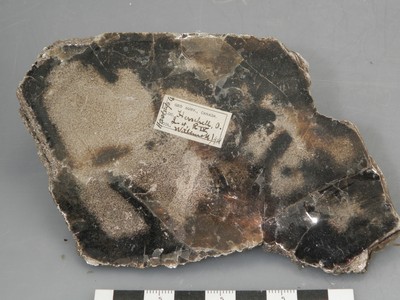Mica is one of the non-metallic minerals and is used in the construction, chemical, electrical, and manufacturing industries. It was first discovered and mined in Canada in the 19th century, with many important mines operating within a 150-mile radius of Ottawa. There are several types of mica, and this specimen is phlogopite mica. Because it can withstand temperatures of 1000 degrees Celsius, phlogopite mica is used in the manufacture of insulators against extreme heat.
This phlogopite crystal was collected in 1894 in Hastings County, Ontario, by Charles Willimott. It was, by no means, the largest specimen ever found in Canada – that honour would go to a crystal found at the Lacey Mine, north of Kingston, Ontario.
Willimott was hired by the Geological Survey of Canada in 1871 to assist Thomas Weston, who had been responsible for the Survey’s museum since 1859. Weston was a noted collector of fossils for the museum, and Willimott was made responsible for collecting rock specimens. In the late 1870s, when the Survey’s rock and mineral sets became popular with educators, Willimott’s work shifted to collecting the materials needed to construct the sets and assembling them to meet the growing demand.
Category: Rocks, Fossils, Minerals and Meteorites
Decade: 1870s


